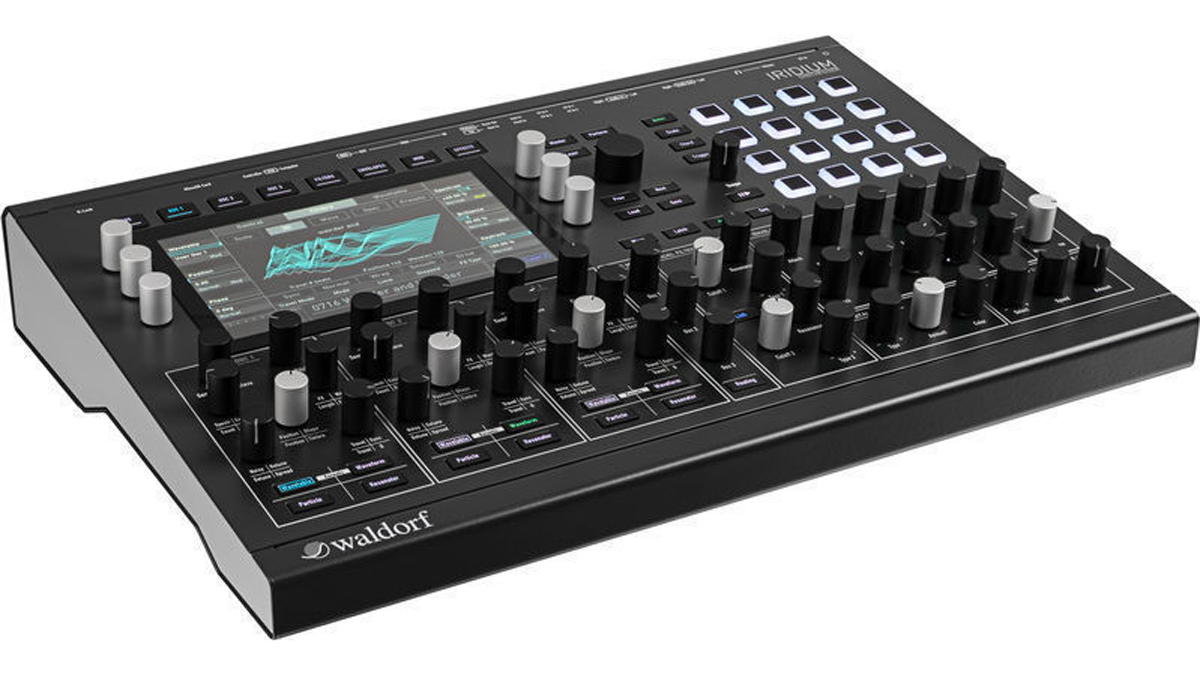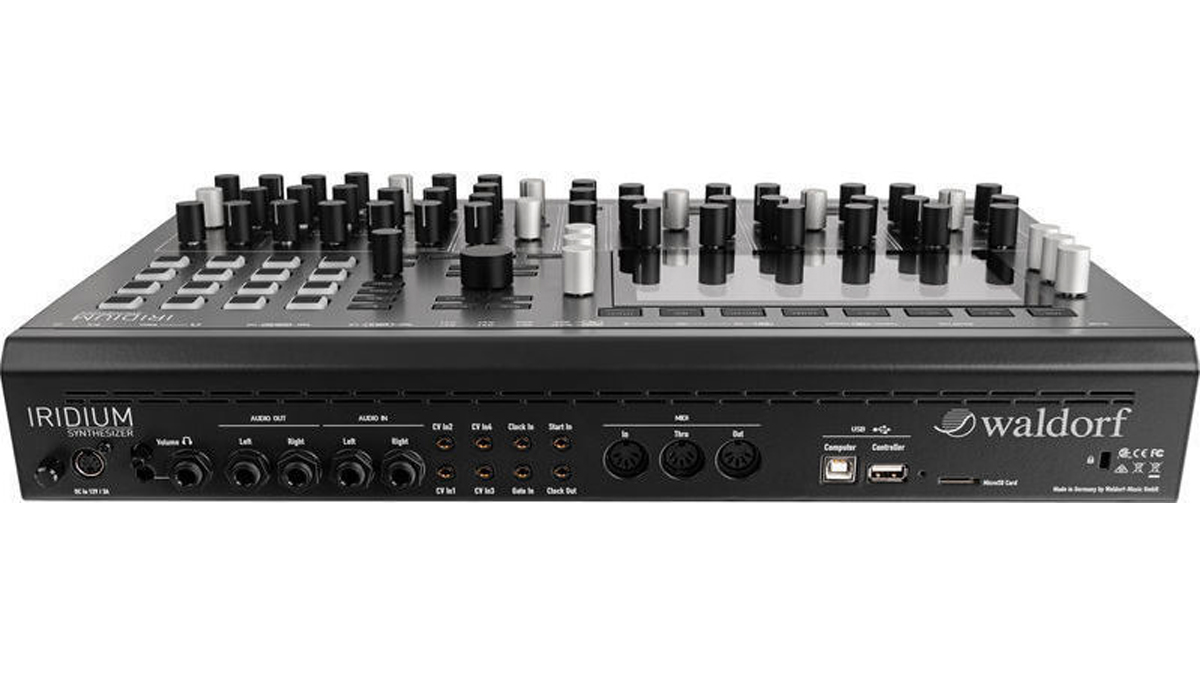Waldorf Iridium looks set to bring the Quantum super-synth to your desktop or rack
Powerful hybrid technology in a more compact form?

It looks like Waldorf’s stunning Quantum synth is set to be rebooted in a compact and hopefully more affordable format in the shape of the Iridium. This is designed to either sit on your desktop or slot into your rack.
It seems that the Iridium was listed on the Waldorf website and then removed, suggesting an accidental leak by the company. If the initial specs are accurate, this will be a hybrid synth with three oscillators, each of which offers five synthesis modes: wavetable, Waveform (virtual analogue), Particle (sampling/granular sampling), Resonator and Kernels.
The Kernels mode was added to the Quantum as part of the OS 2.0 update, and enables one oscillator to be turned into up to six sub-oscillators.
We’ve expecting that Iridium’s patches will be compatible with Quantum (and vice versa) and that you’ll have space to store a whopping 7000 of them on the synth. Other anticipated features include three digital filters per voice and a powerful modulation matrix.

Control of the Iridium is set to come via dedicated knobs for the major features and a touchscreen with encoders for the rest. There’s no keyboard, obviously, but a 4x4 silicone pad matrix should enable you to play notes, chords, arpeggios and sequences. There looks to be comprehensive MIDI, audio and CV/gate connectivity, too.
As this is all unofficial so far, there’s no word yet on pricing or availability, but we’ll keep you posted. We’re also expecting an announcement on the Waldorf website
Get the MusicRadar Newsletter
Want all the hottest music and gear news, reviews, deals, features and more, direct to your inbox? Sign up here.



I’m the Deputy Editor of MusicRadar, having worked on the site since its launch in 2007. I previously spent eight years working on our sister magazine, Computer Music. I’ve been playing the piano, gigging in bands and failing to finish tracks at home for more than 30 years, 24 of which I’ve also spent writing about music and the ever-changing technology used to make it.
“Excels at unique modulated timbres, atonal drones and microtonal sequences that reinvent themselves each time you dare to touch the synth”: Soma Laboratories Lyra-4 review
“A superb-sounding and well thought-out pro-end keyboard”: Roland V-Stage 88 & 76-note keyboards review









